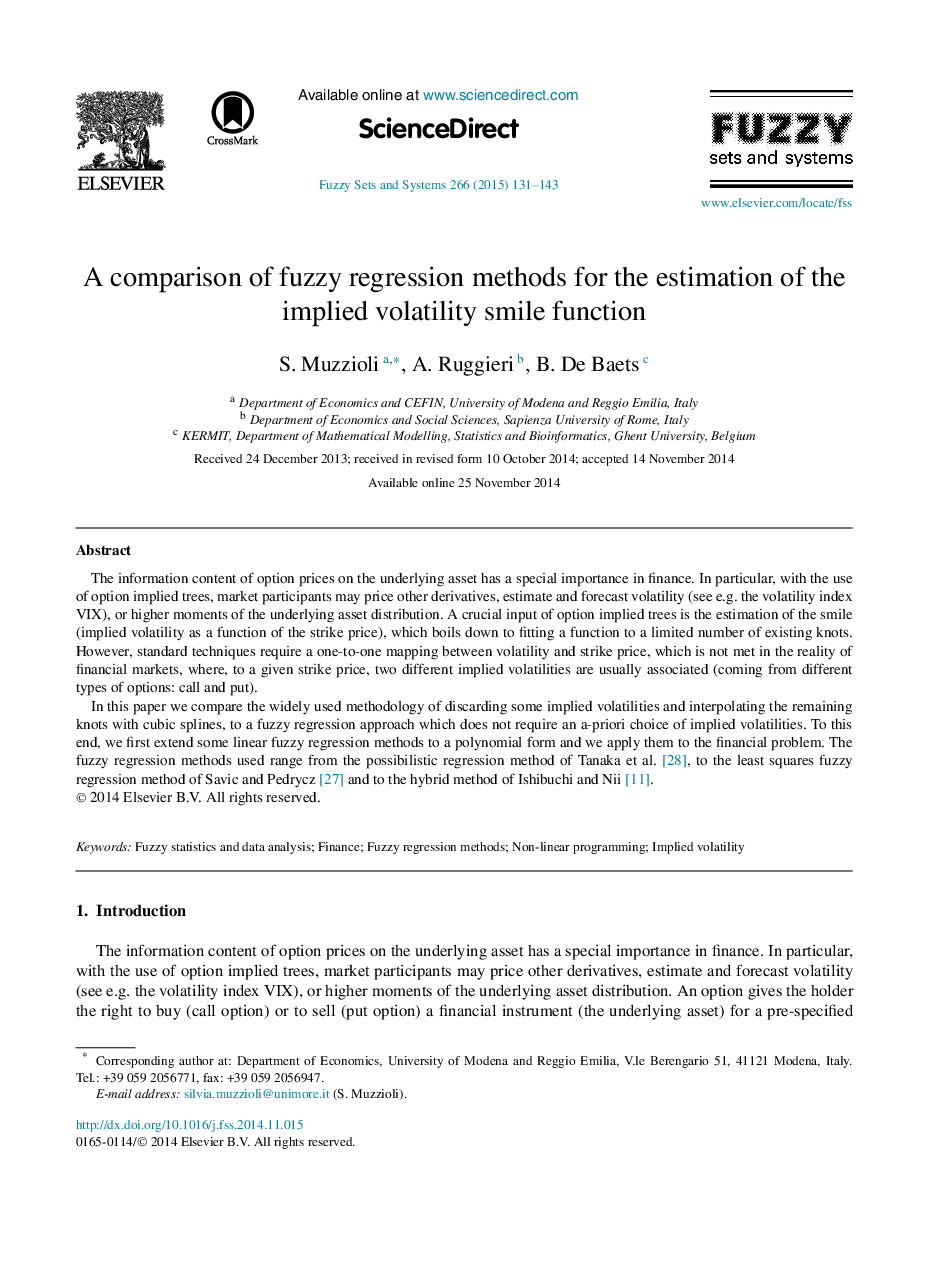| Article ID | Journal | Published Year | Pages | File Type |
|---|---|---|---|---|
| 389253 | Fuzzy Sets and Systems | 2015 | 13 Pages |
The information content of option prices on the underlying asset has a special importance in finance. In particular, with the use of option implied trees, market participants may price other derivatives, estimate and forecast volatility (see e.g. the volatility index VIX), or higher moments of the underlying asset distribution. A crucial input of option implied trees is the estimation of the smile (implied volatility as a function of the strike price), which boils down to fitting a function to a limited number of existing knots. However, standard techniques require a one-to-one mapping between volatility and strike price, which is not met in the reality of financial markets, where, to a given strike price, two different implied volatilities are usually associated (coming from different types of options: call and put).In this paper we compare the widely used methodology of discarding some implied volatilities and interpolating the remaining knots with cubic splines, to a fuzzy regression approach which does not require an a-priori choice of implied volatilities. To this end, we first extend some linear fuzzy regression methods to a polynomial form and we apply them to the financial problem. The fuzzy regression methods used range from the possibilistic regression method of Tanaka et al. [28], to the least squares fuzzy regression method of Savic and Pedrycz [27] and to the hybrid method of Ishibuchi and Nii [11].
